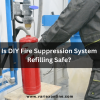![]()
Fire Immuniser
+91-7829629111
Email: info@variex.in
Varistor Technologies Pvt. Ltd.
Block-1, First Floor, Ardente Office One, Hoodi Circle, ITPL Main Road, Bengaluru, Karnataka 560048, IN
Fire Hydrant System Equipments List
Fire hydrant systems are vital for ensuring quick access to water during emergencies. Let's delve into the key equipment comprising these systems:
| Equipment | Description |
|---|---|
| Hydrants | The main water access points, often located outdoors. They are connected to pressurized water sources and feature above-ground outlets for attaching hoses during firefighting operations. |
| Valves | |
| - Main Control Valve | Regulates the flow of water from the main supply into the fire hydrant system. It is usually located underground and can be operated during emergencies to control water distribution. |
| - Outlet Valves | Positioned at each hydrant, these valves control the flow of water to individual hoses and can be opened or closed as needed. They play a crucial role in directing water flow during firefighting. |
| Pipes | Underground pipelines that transport water from the main supply to the hydrants throughout the building or area. These pipes are typically made of durable materials to withstand high pressures and corrosion. |
| Connectors | |
| - Couplings | Connect hoses to hydrants and other firefighting equipment securely, ensuring a reliable and leak-proof connection. They are designed to maintain water pressure during firefighting operations. |
| - Adapters | Used to connect hoses of different sizes or types, ensuring compatibility between various firefighting equipment. Adapters play a crucial role in facilitating efficient water flow during firefighting operations. |
| Storage Devices | |
| - Hose Reels | Storage units for fire hoses, allowing quick and organized deployment during firefighting emergencies. Hose reels can be fixed or portable and are often located strategically near fire exits or high-risk areas. |
| - Cabinets | Store additional firefighting equipment, such as nozzles, adapters, and wrenches, providing easy access in case of emergencies. Cabinets help keep firefighting tools organized and readily available for use. |
| Nozzles | Attachments at the end of fire hoses that control the direction and flow of water. They come in various types, including adjustable spray nozzles and solid stream nozzles, to suit different firefighting needs. |
| Monitoring Devices | |
| - Pressure Gauges | Instruments used to measure water pressure within the system, ensuring adequate water supply and monitoring pressure levels during firefighting operations. Pressure gauges are essential for effective fire response. |
| - Flow Meters | Measure the volume of water flowing through the hydrant system, providing valuable information for firefighting operations and water conservation efforts. Flow meters help optimize water usage during emergencies. |
| Connection Points | |
| - Fire Department Connection (FDC) | Provides a connection point between the fire hydrant system and the municipal water supply, allowing firefighters to supplement water from hydrants with high-pressure water mains. FDCs enhance firefighting capabilities. |
| - Building Connection | Allows direct connection to a building's internal sprinkler system, enabling firefighters to access additional water sources for firefighting operations. Building connections enhance firefighting efficiency and water usage. |
Hydrants:
- Hydrants serve as the primary access points for water, typically located outdoors. They connect to pressurized water sources and feature above-ground outlets for attaching hoses during firefighting.
Valves:
- Main Control Valve: Regulates water flow from the main supply into the system. Often located underground, it's operated during emergencies.
- Outlet Valves: Positioned at each hydrant, these valves control water flow to individual hoses and can be opened or closed as needed.
Pipes:
- An underground network of pipes distributes water from the main supply to hydrants. Durable materials like ductile iron or steel are used to withstand high pressures and corrosion.
Couplings:
- Couplings connect hoses to hydrants and other firefighting equipment, ensuring a leak-proof connection and maintaining water pressure during operations.
Hose Reels:
- Hose reels are storage devices for fire hoses, facilitating quick deployment during emergencies. They can be fixed or portable and are often located indoors near fire exits.
Nozzles:
- Nozzles control the direction and flow of water at the end of fire hoses. Various types are available to suit different firefighting needs, including adjustable spray nozzles and solid stream nozzles.
Pressure Gauges:
- Pressure gauges measure water pressure within the system, ensuring an adequate supply and allowing firefighters to monitor pressure levels during operations.
Fire Department Connection (FDC):
- FDCs provide a connection point between the fire hydrant system and the municipal water supply. This enables firefighters to supplement water from hydrants with high-pressure water mains, enhancing firefighting capabilities.
Understanding the function and importance of each equipment in a fire hydrant system is crucial for effective fire safety planning and maintenance. Regular inspections, testing, and maintenance ensure that all components remain operational, ready to protect lives and property in the event of a fire.
Frequently Asked Questions
Storage devices like hose reels and cabinets provide organized storage for fire hoses and additional firefighting equipment, ensuring quick and efficient deployment during emergencies.
Monitoring devices, including pressure gauges and flow meters, measure water pressure and volume within the system, providing valuable information for firefighting operations and water conservation efforts.
Connection points, such as Fire Department Connections and Building Connections, provide access to municipal water supplies and internal sprinkler systems, enhancing firefighting capabilities and efficiency.
Property owners, building managers, or designated maintenance personnel are typically responsible for inspecting, testing, and maintaining fire hydrant system equipment to ensure functionality and compliance with regulations.
If you encounter problems with fire hydrant system equipment, report them promptly to the appropriate authorities or property management for timely resolution and maintenance.
Final Say
At VariEx.in and VariexOnline.com, we specialize in supplying and installing top-quality fire fighting systems and equipment. From fire extinguishers to advanced suppression systems, we offer comprehensive solutions tailored to your needs. Our experienced team ensures precise installation and maintenance for optimal safety.
Trust VariEx for reliable fire protection. Contact us online or call 7829629111 to learn more.










